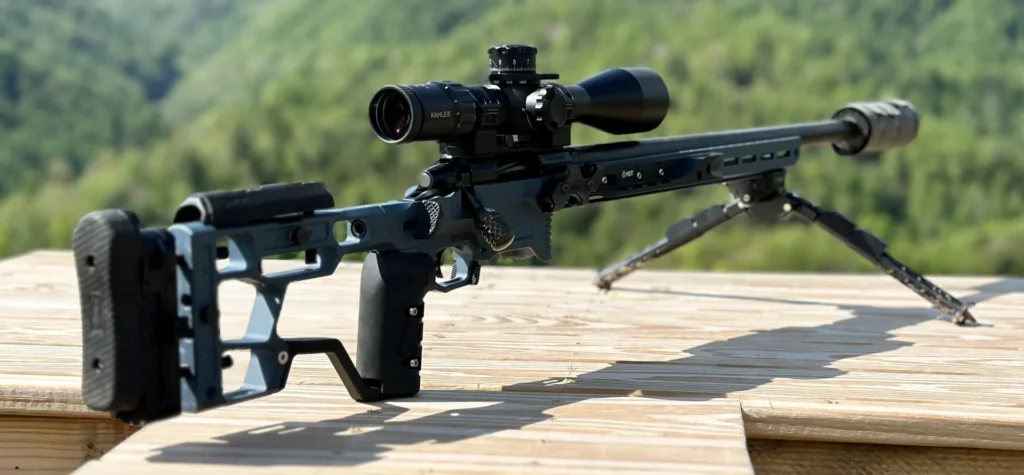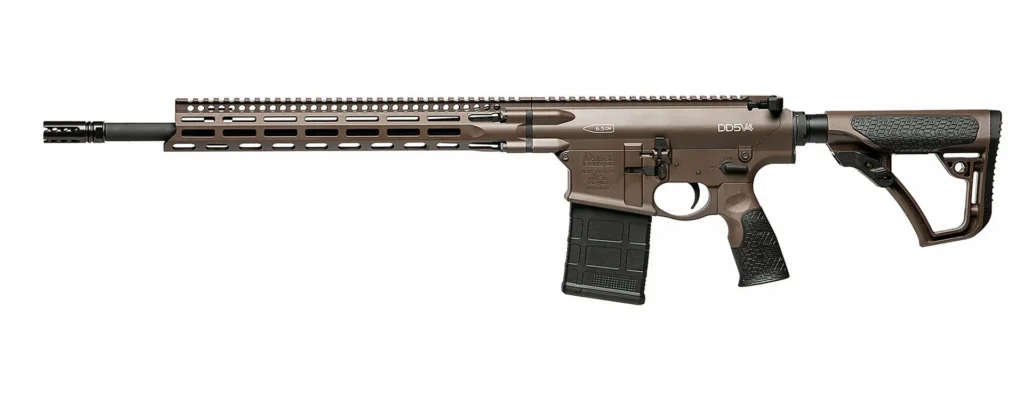When it comes to long-range shooting, your rifle can make all the difference between hitting steel at 1,000 yards or missing by a mile. Choosing the perfect rifle for precision shooting is not just about price or looks. It’s about understanding what YOU need, how YOU shoot, and what YOUR goals are. In this guide, we will walk you through everything you need to know to choose the best rifle setup for your long-range journey. Whether you are stepping into Precision Rifle Series (PRS) competitions, planning a western hunting trip, or simply looking to extend your shooting skills, the right rifle will set you up for success.

Start with Purpose: What Will You Use the Rifle For?
Before you pick a caliber or brand, it is important to ask yourself what the main goal of your rifle will be. If you are focused on competition shooting like PRS or NRL matches, speed, precision, and consistency should be your top priorities. In these scenarios, lighter recoiling calibers and faster cycling actions are often the best choices. For hunting, particularly in western big game environments, portability becomes much more important. A lighter rifle chambered in a caliber capable of ethical kills at distance will be critical. If your primary goal is recreational shooting and training, you might prioritize something more budget-friendly that still consistently produces sub-MOA groups. Your purpose truly defines your build because a competition rifle and a hunting rifle are two very different animals.
Choosing the Right Caliber
Selecting the right caliber is another critical decision that impacts your success at long range. Caliber truly matters, and choosing poorly can ruin the entire experience. Some of the most popular and effective calibers for long-range shooting include the 6.5 Creedmoor, much like the Daniel Defense DD5V4. This setup is often considered the go-to option for both beginners and experienced shooters due to its flat trajectory, low recoil, and wide availability of factory ammo.
For competition shooters, calibers like the 6mm Creedmoor or 6mm GT have become favorites because of their even lighter recoil, allowing for faster follow-up shots. While the .308 Winchester remains a solid choice for training and hunting, it does experience more drop and wind drift beyond 800 yards. For shooters aiming at extreme ranges or planning to hunt large game, cartridges like the .300 PRC or .300 Win Mag deliver heavy-hitting performance. When choosing a caliber, it is important to consider recoil management, barrel life, and the long-term costs and availability of ammunition.

Action Type: Custom or Factory?

The heart of any precision rifle is the action, and this is where shooters have a big choice between custom and factory actions. Custom actions from companies like Impact Precision, Defiance, and Lone Peak offer buttery smooth cycling, tighter tolerances, and better repeatability—advantages that matter for serious competitors. However, modern factory actions like the Remington 700, Tikka T3x, and Bergara Premier lines have come a long way and deliver exceptional performance for hunters and newer shooters. At Precision Gunworks, we specialize in both factory rifle setups and full custom builds, meaning we can help match you with the right action based on your needs and budget.
Barrel Length and Profile: What You Need to Know
Your barrel is another major component that influences velocity, precision, and portability. Barrel length and profile both matter. For competition rifles, 24- to 26-inch barrels are common to maximize velocity and ballistic efficiency. For hunters, who often carry their rifles over rough terrain, a 20- to 22-inch barrel offers a good balance of portability and range. Heavier barrel profiles, such as MTU or bull barrels, resist heat better during extended shooting strings but also add significant weight. In contrast, sporter profile barrels are lighter and ideal for backcountry hunts. A match-grade, hand-lapped barrel from companies like Bartlein or Proof Research can dramatically elevate your rifle’s accuracy potential.

Stock or Chassis: Finding the Right Fit
The rifle should fit you, not the other way around. This is why stock or chassis selection is crucial. Adjustable chassis systems like those from MDT (pictured below) and XLR offer high levels of customization, making them ideal for competition or tactical shooting. Traditional fiberglass or carbon-fiber stocks from companies like McMillan or Manners tend to be lighter and often more comfortable for field use. When selecting a stock or chassis, it is important to look for features like adjustable cheek rests, adjustable length of pull, and accessory attachment points like M-LOK or Picatinny slots. At Precision Gunworks, we always recommend trying different stock and chassis setups when possible to find the one that matches your body and shooting style perfectly.

Optics: Invest in Quality Glass
No matter how good your rifle is, it is only as good as the optics you mount on top of it. Skimping on the scope is one of the most common mistakes shooters make. For long-range shooting, a first focal plane (FFP) reticle is a must, allowing you to range and hold correctly at any magnification. Look for scopes with exposed turrets that offer tactile, positive clicks and reliable tracking. You will also want at least 20x magnification for truly precise long-range work. Trusted brands like Vortex, Nightforce, Leupold, and Kahles are excellent starting points. As a general rule, plan to invest almost as much—or even more—into optics as you do into the rifle itself. Good glass makes good hits, plain and simple.

Triggers: Why a Crisp Break Matters
Triggers are often overlooked but are vital for consistent precision. Aftermarket triggers from companies like TriggerTech, Timney, or Bix’n Andy can be a game-changer. Look for a crisp, predictable break with a pull weight in the .5- to 2-pound range for competition or precision shooting. A clean trigger break helps improve shot timing and builds shooter confidence over time.
Accessories: Final Touches for Long-Range Success
Once your rifle, optics, and trigger are dialed in, there are still a few final touches to consider. Suppressors are becoming increasingly popular for long-range rifles, offering reduced recoil and quieter shooting experiences, though the legal process to obtain them can take time. A solid bipod from Atlas, Harris, or MDT will provide a stable shooting platform, which is crucial for consistency. Additionally, shooting bags for rear support and a bag rider attachment can significantly enhance stability. Finally, pairing your rifle setup with a quality ballistics calculator, such as a Kestrel or the Hornady 4DOF app, will help you make fast, accurate adjustments in changing conditions.

Final Thoughts: Build a Rifle Around Your Needs
I hate to break it to you, but there is no off-the-shelf rifle that will check all of the boxes. Choosing the perfect long-range rifle is not about buying the most expensive parts or chasing the latest trends. It is about matching YOUR rifle to your goals, YOUR body, and YOUR shooting style. At Precision Gunworks, we love helping shooters build their dream rifles from fully customized bolt-action setups to tuning factory rifles into long-range machines. Whether you are preparing for your first PRS match, dialing in a mountain hunting rifle, or simply exploring the art of precision shooting, the right rifle makes all the difference.
Ready to build your perfect rifle? Contact us today, and let’s start crafting a setup that is ready to send it with precision.





